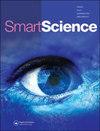A Different Perception of Hybrid Renewable Energy Sources Integrated Multi-objective Optimal Power Flow considering Performance Parameters and Penetration
IF 1.4
Q2 MULTIDISCIPLINARY SCIENCES
引用次数: 9
Abstract
ABSTRACT Traditional generating units, as well as renewable energy resources, make up the electrical grid. The proposed article proposes performance indices for optimal power flow, which combine wind turbines, solar photovoltaic systems, and hybrid solar with small hydropower sources. The irregularity of renewable energy sources’ performance adds to the complexity of the optimal power flow (OPF) problem. The analytical strategies also use lognormal, Weibull, and Gumbel probability density functions to approximate the energy yield of those renewables. Also explored is the effect of changing distribution parameters and the penetration of renewable energy resources as a function of optimal power flow. Penalty charges for underestimation and standby charges for overestimation of unusual non-conventional generating units are included in the objective feature. The optimization problem is solved using a non-dominated multi-objective moth flame optimization technique. In terms of achieving diverse and convergent Pareto optimal solutions, the MOMFO optimizer is more efficient and robust than the SMODE/SF and MOEA/D-SF optimizers, according to the simulation outcomes. As a result IEEE-30 bus system, the MOMFO optimizer can be used to tackle the MO-SCOPF issue with the incorporation of wind, solar, hydro, and thermal generators in an integrated multiple-power system. GRAPHICAL ABSTRACT考虑性能参数和渗透的混合可再生能源多目标最优潮流的不同感知
电网由传统发电机组和可再生能源组成。本文提出了最佳潮流的性能指标,该指标结合了风力涡轮机、太阳能光伏系统、混合太阳能和小水电资源。可再生能源性能的不规则性增加了最优潮流问题的复杂性。分析策略还使用对数正态、威布尔和甘贝尔概率密度函数来近似这些可再生能源的能源产量。还探讨了作为最优潮流函数的分布参数变化和可再生能源渗透的影响。目标特征中包括低估的惩罚费用和高估异常非常规发电机组的备用费用。使用非支配多目标蛾火焰优化技术来解决优化问题。根据模拟结果,在实现多样化和收敛的Pareto最优解方面,MOMFO优化器比SMODE/SF和MOEA/D-SF优化器更高效、更稳健。作为IEEE-30总线系统的结果,MOMFO优化器可用于解决MO-SCOPF问题,将风力、太阳能、水力和热力发电机整合到集成的多电源系统中。图形摘要
本文章由计算机程序翻译,如有差异,请以英文原文为准。
求助全文
约1分钟内获得全文
求助全文
来源期刊

Smart Science
Engineering-Engineering (all)
CiteScore
4.70
自引率
4.30%
发文量
21
期刊介绍:
Smart Science (ISSN 2308-0477) is an international, peer-reviewed journal that publishes significant original scientific researches, and reviews and analyses of current research and science policy. We welcome submissions of high quality papers from all fields of science and from any source. Articles of an interdisciplinary nature are particularly welcomed. Smart Science aims to be among the top multidisciplinary journals covering a broad spectrum of smart topics in the fields of materials science, chemistry, physics, engineering, medicine, and biology. Smart Science is currently focusing on the topics of Smart Manufacturing (CPS, IoT and AI) for Industry 4.0, Smart Energy and Smart Chemistry and Materials. Other specific research areas covered by the journal include, but are not limited to: 1. Smart Science in the Future 2. Smart Manufacturing: -Cyber-Physical System (CPS) -Internet of Things (IoT) and Internet of Brain (IoB) -Artificial Intelligence -Smart Computing -Smart Design/Machine -Smart Sensing -Smart Information and Networks 3. Smart Energy and Thermal/Fluidic Science 4. Smart Chemistry and Materials
 求助内容:
求助内容: 应助结果提醒方式:
应助结果提醒方式:


